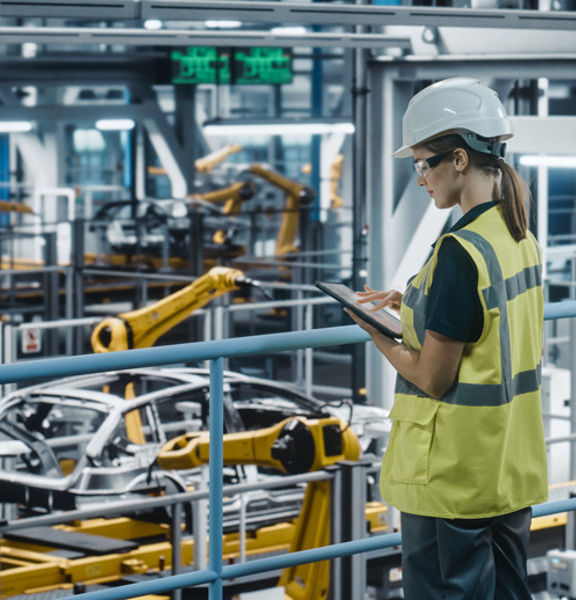Become a member
Take advantage of exclusive member benefits, world class events, networking and specialist support








 Become a member
Become a member 

12 October 2023
We spoke to KUKA Ireland’s General Manager Brian Cooney, to understand just how the adoption of robotics in the food industry is evolving and, the challenges that they can help manufacturers overcome.
Where in the food production plant are you seeing robots providing the best solutions to traditionally difficult to solve problems?
I still believe that one of the ‘best’ use of robotics in the food industry continues to be the palletising of product, simply because it removes this laborious task, and associated requirement to repetitively lift heavy weights. Palletising can also provide the flexibility to handle multiple variants of product whether that be variation in the product type itself (sorting) or variations in the product packaging and dimensions. However, the palletising application of robotics is now quite an established technology throughout the industry so I wouldn’t necessarily consider the task to be a ‘difficult to solve problem’, but, more recently, the development of high speed vision applications, accurate conveyor tracking devices and some very clever gripper concepts, has allowed us to use robotics in applications of high product mix and difficult to handle items. Of course, it is the technologies in combination that provide the solution but most importantly we are and will continue to find solutions for difficult to solve problems.
Are you seeing an increase in interest in the use of collaborative robot solutions in the food industry - if so in what type of application?
Collaborative robotics play their part in many fenceless applications throughout the industry. Most of what I am familiar with is open fence palletising or packaging. This type of collaborative application fits into the category of ‘Speed and Separation Monitoring’ within the definitions according to ISO/TS 15066:2016(E). Many of the applications we consider in food industry require a high protection rating on the technology of use (e.g: to allow for wash down and steam clean), as a result of this and in addition to the high speed requirements for most food production, the technologies developed for collaborative application are most often not suitable due to their protection rating and restrictive but safe speeds as defined in ISO/TS 15066:2016(E). Therefore, the true HRC (Human Robot Collaboration) applications, or by definition ‘Power & Force Limiting’ applications within the food industry are few. However, collaborative robotics is still, in my opinion, an emerging technology for which we will continue to find new and suitable applications.
We often hear food companies tell us that they would only consider the use of robots on lines that produce the same product all the time (They do not believe that robots offer the flexibility needed to handle shorter production runs and frequent changes) Can you argue the case for the use of robotics on lines that need to offer changeover times and flexibility?
Robotics, by nature, is a flexible technology in automation primarily due to the number of axis of rotation, large working areas and capabilities to interlink with most if not all the communication protocols currently available on the market. The robot by itself will never be the final solution, but with the additional use of other technologies, for example high speed vision systems, complex and clever tooling design, automated tool changing facilities and the many more options to consider on the market, then the possibility to handle shorter production runs and frequent changeover is all very achievable with many current examples on the market of hugely successful applications. The flexible nature of the technologies in combination makes the automation of high mix and low batch all possible, but the challenging task and most important question for a customer, is ‘At what cost point does is make competitive sense’?
Our initial objective is to assist in answering this question to ensure that we all remain competitive together.